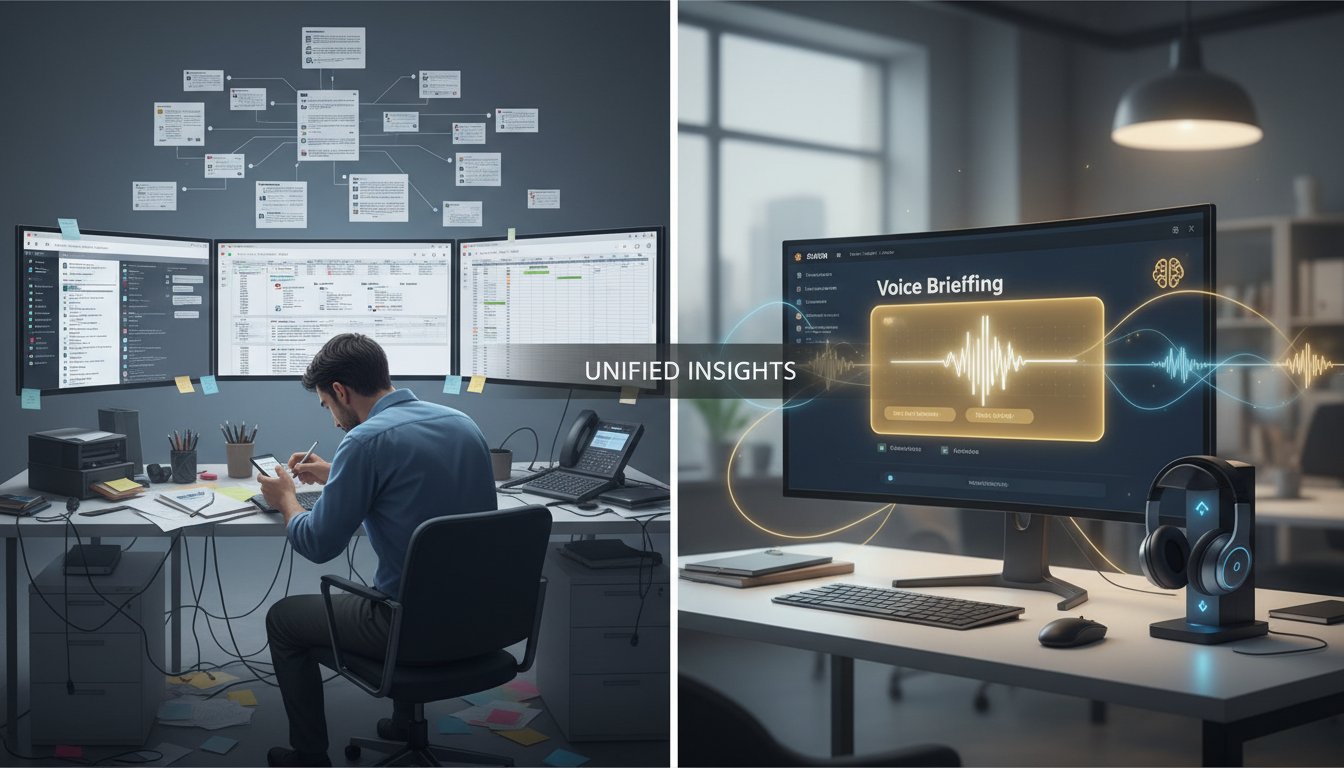Introduction
In the rapidly evolving landscape of artificial intelligence, retrieval systems are becoming increasingly sophisticated across multiple domains. One of the most exciting recent developments comes from Cornell University researchers who have created a groundbreaking framework called RHyME (Retrieval for Hybrid Imitation under Mismatched Execution) that allows robots to learn complex tasks by watching just a single how-to video. While initially developed for robotics, this innovation has profound implications for enterprise RAG (Retrieval Augmented Generation) systems as well.
The challenge of retrieving and correctly applying information has long been a bottleneck for both robotics and enterprise AI systems. Traditional approaches require extensive training data, struggle with contextual understanding, and often fail when faced with mismatches between source materials and execution environments. RHyME offers a sophisticated solution to these limitations with its novel approach to retrieval and adaptation.
As organizations continue to integrate RAG systems into their operations, understanding how innovations like RHyME work can provide valuable insights for improving information retrieval, adaptation, and application in enterprise contexts. Let’s explore this cutting-edge framework and its implications for the future of RAG systems.
How RHyME Works: A Technical Overview
The Core Innovation: Handling Mismatched Execution
At its heart, RHyME solves one of the most challenging problems in both robotics and RAG systems: effectively retrieving and applying knowledge despite mismatches between the source material and the execution environment.
For robots, this means learning tasks despite differences in embodiment (the robot’s physical form versus a human demonstrator). For RAG systems, the parallel is clear – retrieving information from knowledge bases that may be structured differently from how the LLM needs to process and generate responses.
The Cornell team’s approach combines several innovative techniques:
-
Optimal Transport for Alignment: RHyME uses optimal transport costs to automatically align robot and demonstrator task executions, creating semantic bridges between different execution styles.
-
Synthetic Paired Data Generation: The system synthesizes semantically equivalent videos from human demonstrations, creating training data that bridges the gap between different execution styles.
-
Cross-Domain Adaptation: The system can translate knowledge across different domains – from human demonstrations to robot execution, which mirrors how enterprise RAG systems must adapt information from corporate knowledge bases into natural language responses.
-
Temporal Understanding: Perhaps most impressively, RHyME understands the temporal sequence of actions, allowing it to break down complex tasks into manageable steps – a critical capability for both robotics and advanced RAG implementations.
Performance Improvements
The results speak for themselves. RHyME has demonstrated a remarkable 52% increase in task recall compared to baseline methods, particularly in scenarios with high execution mismatches. This level of improvement suggests that similar principles could dramatically enhance enterprise RAG systems when dealing with heterogeneous data sources.
Enterprise RAG Applications: Beyond Traditional Retrieval
The principles behind RHyME offer several immediate applications for enterprise RAG systems:
1. Improved Context Handling
Traditional RAG systems sometimes struggle with maintaining context across complex, multi-step processes. RHyME’s approach to temporal sequencing could help enterprise RAG systems better maintain context across lengthy documents or multi-step procedures.
For example, when a financial services company needs to extract regulatory compliance procedures from thousands of documents, RHyME-inspired approaches could better maintain the proper sequence of steps while adapting the information to specific use cases.
2. Cross-Format Retrieval
Many enterprises store knowledge in various formats – from structured databases to unstructured documents, diagrams, and legacy systems. RHyME’s ability to work across mismatched executions suggests new approaches for RAG systems to retrieve and integrate information from heterogeneous data sources.
A manufacturing company, for instance, could use such a system to extract relevant information from technical drawings, maintenance manuals, and operational logs, even when these sources use different terminology and structures.
3. One-Shot Learning for Domain Adaptation
Perhaps most excitingly, RHyME demonstrates the power of one-shot learning – the ability to learn from a single example. This could dramatically reduce the amount of training data needed for specialized enterprise RAG systems, making them more adaptable to niche domains with limited available data.
For healthcare organizations dealing with rare conditions or specialized procedures, a RHyME-inspired RAG system could extract and adapt relevant information from limited case studies to assist medical professionals.
4. Embedding Alignment
RHyME’s visualizations of task embeddings using t-SNE reveal its ability to effectively group similar tasks across different embodiments. This suggests that similar techniques could improve embedding alignment in RAG systems, helping to bridge semantic gaps between queries and documents.
Security Implications in the RAG Era
This advancement comes at a critical time when AI security is becoming a major focus. The recent acquisition of Protect AI by Palo Alto Networks for a reported $500+ million signals the growing importance of securing AI systems, including RAG implementations.
The acquisition highlights several security considerations for RAG systems:
-
Data Poisoning: As retrieval systems become more sophisticated, protecting against data poisoning attacks becomes more critical. RHyME’s approach to synthesizing training data could potentially be adapted to detect and mitigate such attacks.
-
Prompt Injection: Advanced retrieval systems may be vulnerable to prompt injection attacks that manipulate how information is retrieved and presented. Security frameworks like those from Protect AI can help detect and prevent these vulnerabilities.
-
Authentication of Sources: Ensuring that retrieved information comes from trusted sources is paramount for enterprise RAG implementations. Security measures must evolve alongside retrieval capabilities.
Implementing RHyME-Inspired Techniques in Your RAG Systems
For organizations looking to enhance their RAG implementations with RHyME-inspired approaches, consider these strategies:
1. Temporal Chunking
Break down documents into semantically meaningful temporal chunks rather than arbitrary token limits. This approach better preserves the sequential nature of processes and procedures:
def temporal_chunking(document):
# Identify logical breakpoints in processes
sections = identify_process_stages(document)
# Preserve relationships between stages
return create_linked_chunks(sections)
2. Cross-Domain Embeddings
Implement embedding models that can effectively bridge different knowledge domains:
def cross_domain_embedding(content, source_domain, target_domain):
# Extract domain-independent semantic meaning
core_semantics = extract_core_semantics(content)
# Adapt to target domain conventions
return adapt_to_domain(core_semantics, target_domain)
3. Hybrid Retrieval Pipelines
Combine multiple retrieval strategies (semantic, keyword, structural) for more robust information retrieval:
def hybrid_retrieval(query):
results = []
results.extend(semantic_search(query))
results.extend(keyword_search(query))
results.extend(structural_search(query))
return rank_and_deduplicate(results)
4. Misalignment Detection
Build systems that can detect when retrieved information doesn’t perfectly match the execution context and adapt accordingly:
def detect_and_adapt(retrieved_info, execution_context):
misalignment_score = calculate_mismatch(retrieved_info, execution_context)
if misalignment_score > threshold:
return adapt_information(retrieved_info, execution_context)
return retrieved_info
The Future of Retrieval: Where RHyME Points Us
As we look ahead to the future of enterprise RAG systems, RHyME suggests several promising directions:
-
Multimodal RAG: Just as RHyME works with video demonstrations, future RAG systems will likely need to retrieve and integrate information across text, images, video, and structured data.
-
Context-Aware Adaptation: The ability to adapt retrieved information based on the specific context of use will become increasingly important as organizations deploy RAG systems for diverse applications.
-
Transfer Learning Across Domains: RHyME’s success in transferring knowledge across different embodiments suggests that RAG systems could become more adept at transferring knowledge across different business domains and applications.
-
Efficient Learning from Limited Examples: The one-shot learning capabilities demonstrated by RHyME could lead to RAG systems that require far less training data to perform effectively in specialized domains.
Conclusion
The development of RHyME represents a significant milestone in retrieval-based AI systems. By understanding how this framework enables robots to learn from a single demonstration despite mismatched execution environments, RAG developers can gain valuable insights for building more robust, adaptable enterprise systems.
As we continue to push the boundaries of what’s possible with retrieval augmented generation, frameworks like RHyME remind us that the most powerful innovations often come from cross-disciplinary approaches. The future of enterprise RAG likely lies not just in scaling existing approaches but in fundamentally rethinking how we retrieve, adapt, and apply knowledge across different contexts.
For organizations implementing RAG systems, now is the time to consider how these advanced retrieval techniques might enhance your AI strategy and provide more robust, secure, and adaptable solutions for your unique business challenges.




